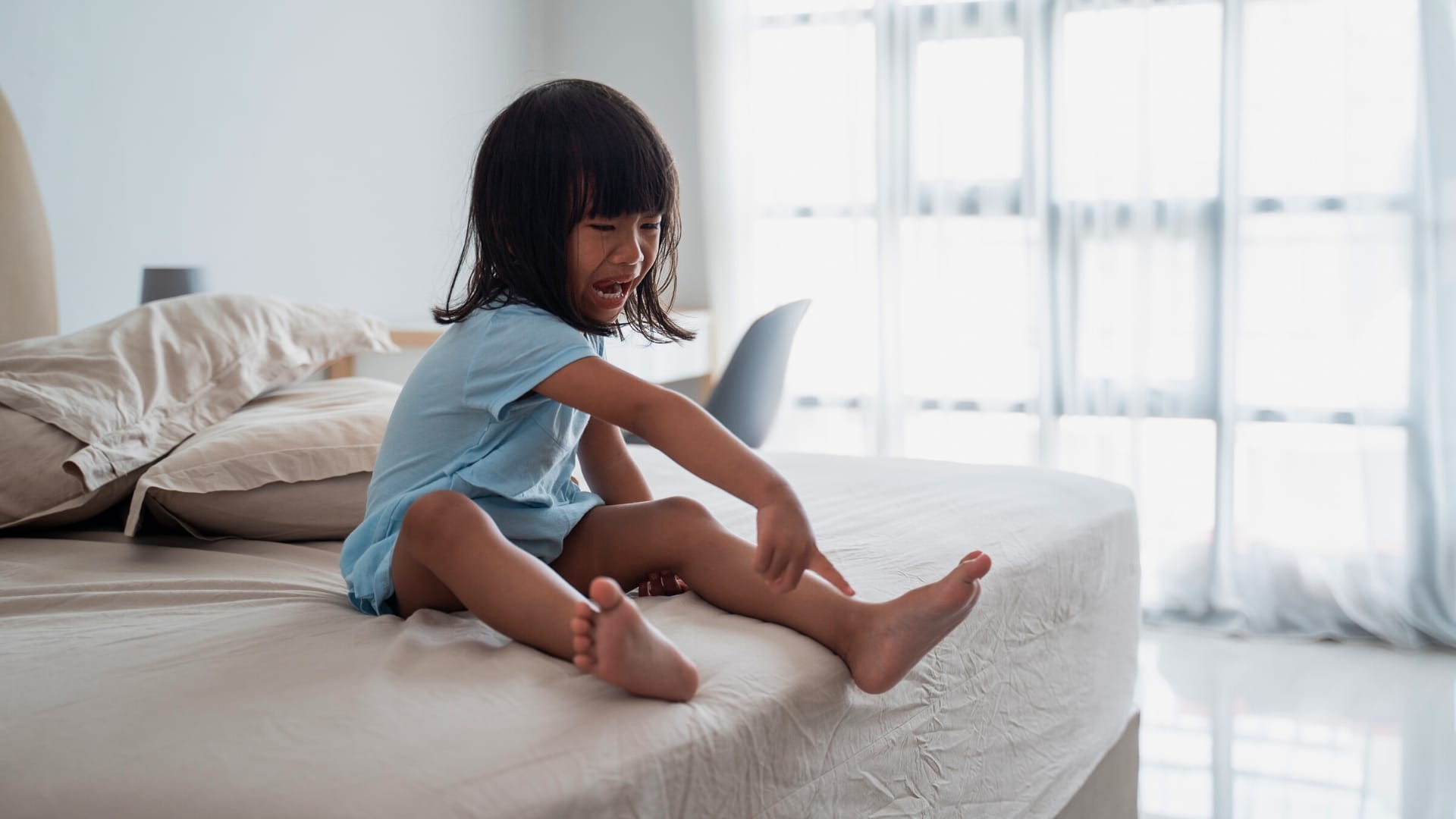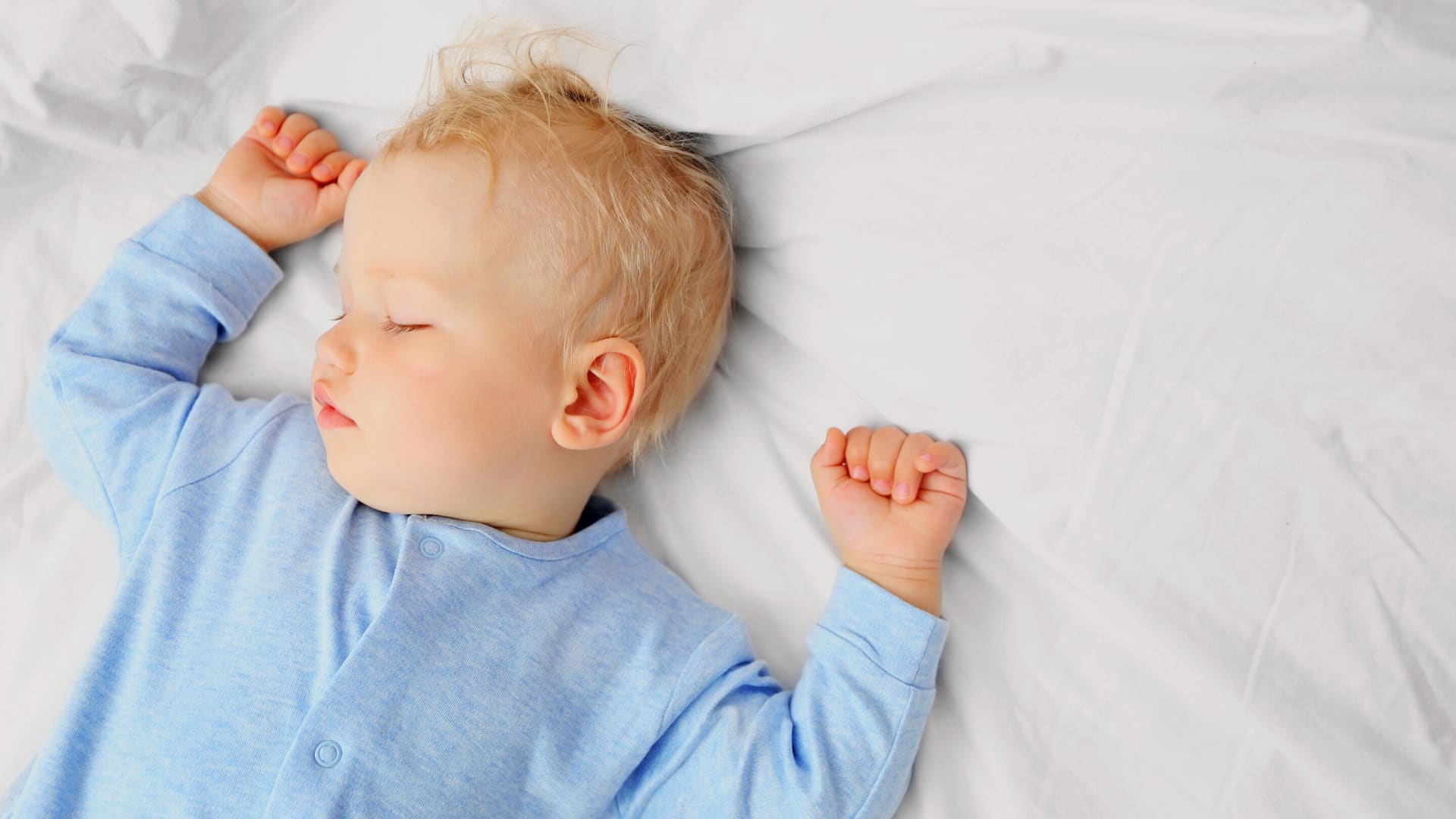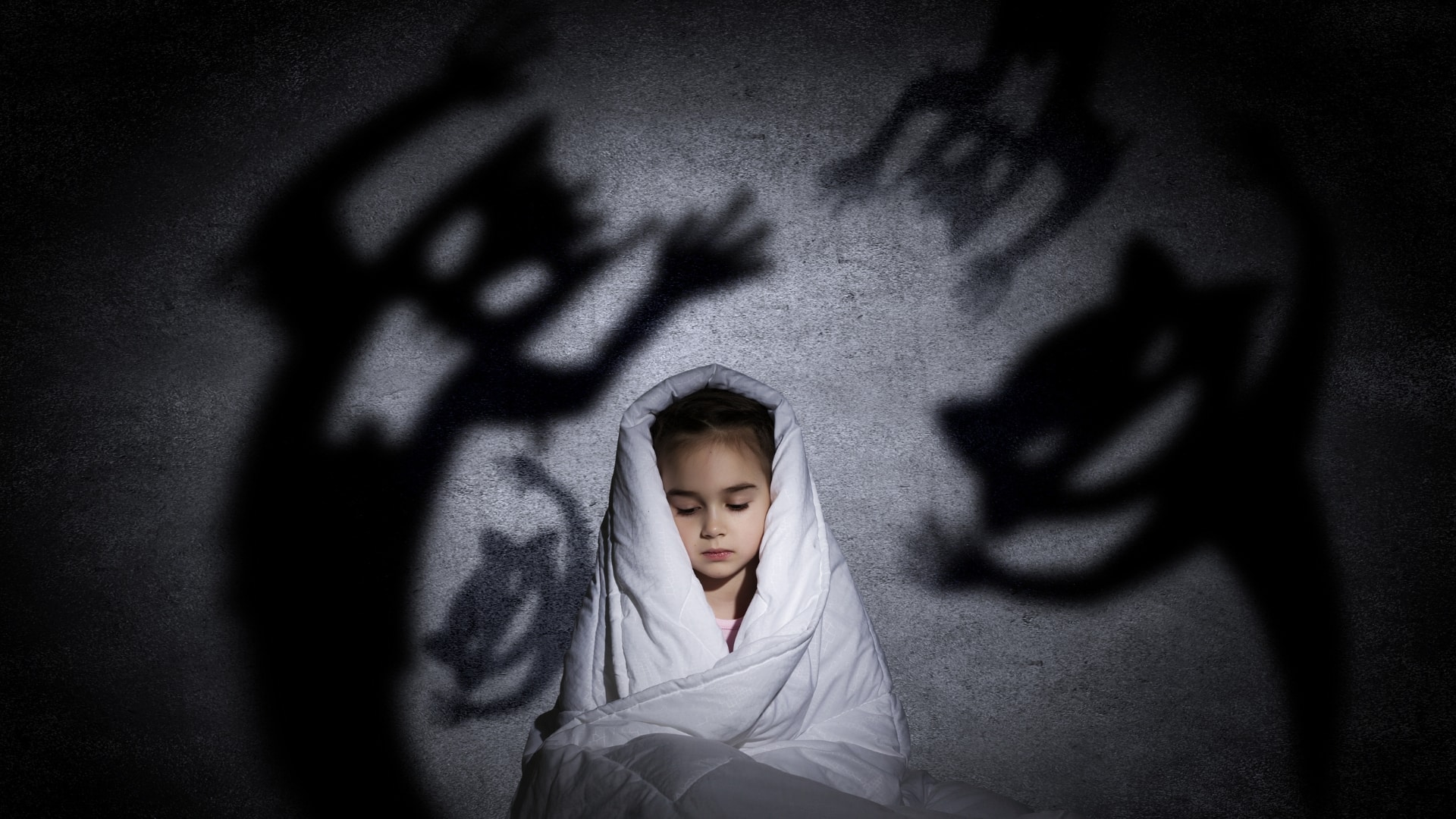Deciding what a newborn should wear to bed can be very daunting, especially for new parents who have been warned about the dangers of baby overheating or being too cold.
In my 40+ years as a Norland Nanny, I have looked after babies in many different countries from the Swiss Alps in Winter to the African bush in mid-summer. As a result, I have come to appreciate that you need to adapt what your newborn wears to bed with the time of year your baby was born and where you live in the world.
However, there are some extra handy tips and signs to look out for that will ensure your newborn is always dressed appropriately for bed, no matter the season, temperature, or location.
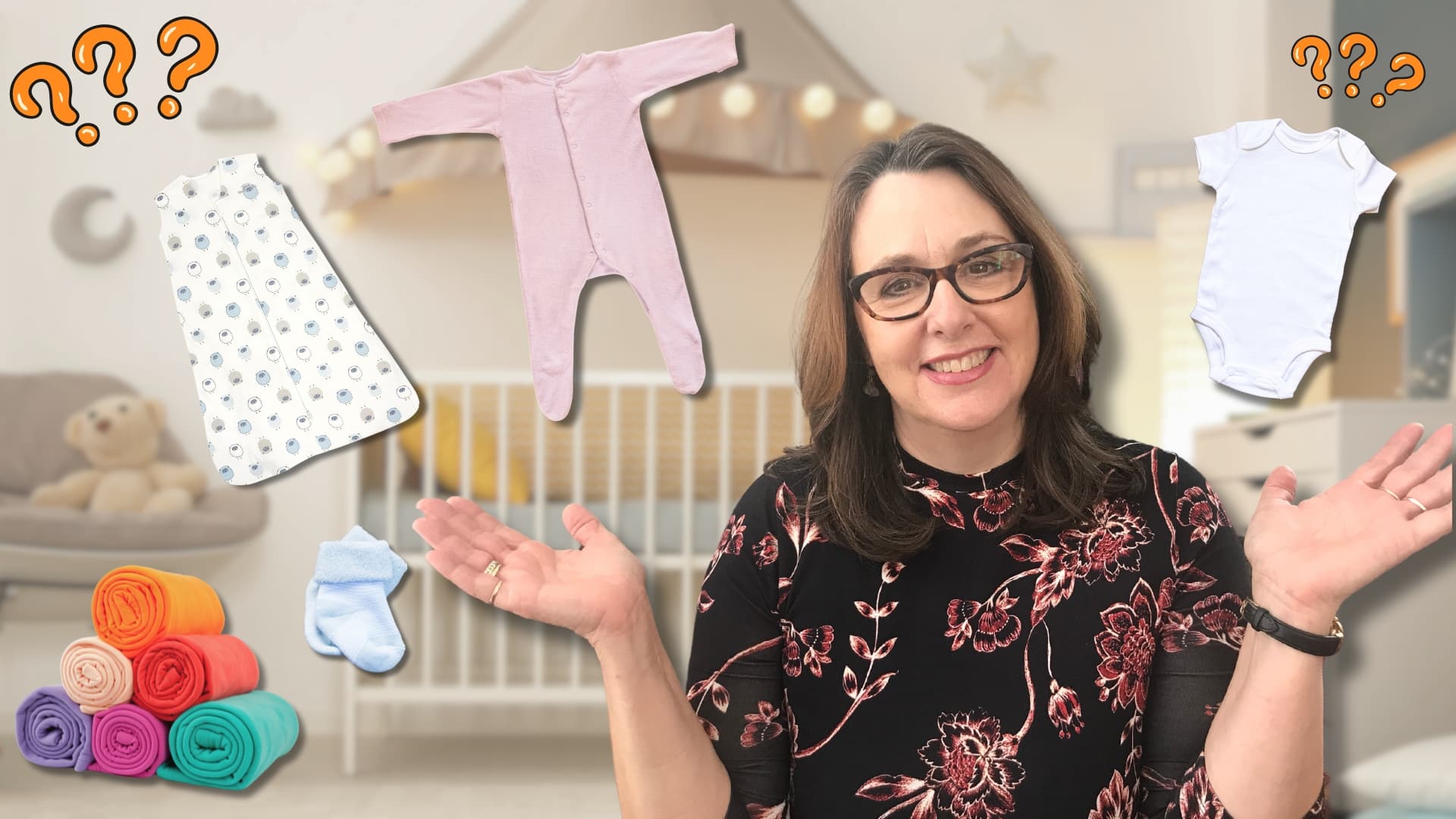
Table of Contents
Ideal Baby Sleep Temperatures
Before we begin discussing what should newborn wear to bed, we need to ensure baby’s room is conducive to comfortable sleep.
The ideal temperature range for baby sleep is between 68 and 72 degrees Fahrenheit (20 and 22.2 degrees Celsius).
This temperature range is comfortable for your newborn baby to sleep in and should be aimed for most of the time.
Of course, during cold snaps or heat waves, your baby’s room temperature may fall outside of this range.
If that happens, then you may need to adjust baby’s clothing or turn on a heater or a fan, both placed well clear of the crib and never aimed directly at them.
TOP TIP: Always use a nursery thermometer so that you don’t have to guess as to whether the room is at the right temperature. In really hot conditions consider using a fan to keep the room cool.
How Should You Dress Newborn For Sleep?
When dressing your newborn for sleep, the first thing you must be aware that your newborn’s body is not yet very good at regulating their body temperature so you will need to manage this by manually adjusting baby’s clothing.
My tried and tested rule of thumb is: Dress your newborn in one more layer than you’d wear.
This applies to all occasions – bedtime, day trips, nap times, and time spent at home.
For example, if you’re wearing a t-shirt, dress your newborn in a basic onesie, a footsie, a pair of socks and a tee.
When dressing a newborn for sleep, you cannot dress baby in socks, mittens and hats as they can easily fall off and cause suffocation hazards in baby’s crib.
Therefore, you may consider swaddling baby or, if they do not like being swaddled, putting them in a sleep sack with an appropriate tog rating to provide just the right amount of warmth and comfort without the hazards of loose bedding.
Both swaddles and sleep sacks are suitable options for newborns to wear to bed, but you must still work on the rule of 1 more layer than you’re wearing.
Your baby will typically wear a vest and a onesie underneath a swaddle or sleep sack and you will simply change the tog rating (I will take more about this in the next section) of the sleep sack or the thickness of the material of the swaddle to match the room temperature.
If you choose a sleeping bag, ensure that it fits properly to prevent your baby from slipping inside and is easy to take on and off. I like this range from Halo.
The number 1 choice from USA hospitals, the Halo sleep sack's 3-way adjustable swaddle allows both-arms-in to reduce startle reflex, 1-arm-out for self-soothing, and two-arms-out for easy transition from swaddling. The super soft fabric also makes this an incredibly cozy environment for babies to settle to sleep in.
Does Temperature Affect What Baby Wears To Sleep?
Understanding the importance of room temperature for your baby’s sleep is crucial. It directly influences what your baby should wear to bed.
A comfortable temperature helps ensure your baby isn’t too hot or too cold during the night and the right clothing can help maintain the ideal body temperature as they sleep.
Room Temperature:
- Cool (Below 70°F, 18°C): Dress your baby in a long-sleeved bodysuit, a sleeper, and a heavier sleep sack or swaddle.
- Moderate (Between 70-72°F, 18-20°C): A short or long-sleeved bodysuit with a lighter sleep sack or swaddle will be suitable.
- Warm (Above 73°F, 20°C): A single lightweight bodysuit or even just a diaper might suffice. A very thin muslin swaddle can also work.
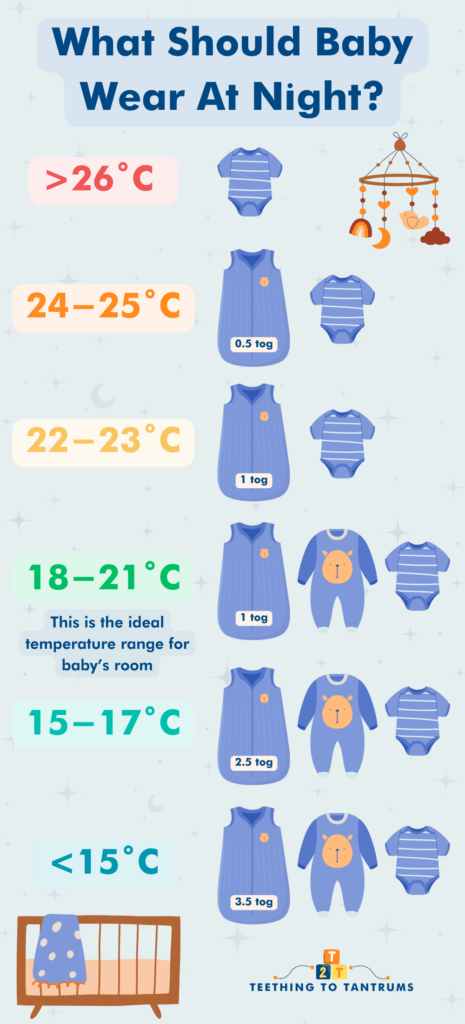
NOTE: The tog rating of the sleep sack indicates the warmth of the bag with a higher tog being suitable for cooler conditions. The ideal tog rating for a 64-69 degrees Fahrenheit room (18-21 degrees Celcius) is a 1-tog sleep sack layered with a onesie and a top.
What Are The Signs Baby Is Too Hot?
Overheating can be a serious risk baby’s comfort and health, so understanding the indicators is key to preventing your baby from overheating.
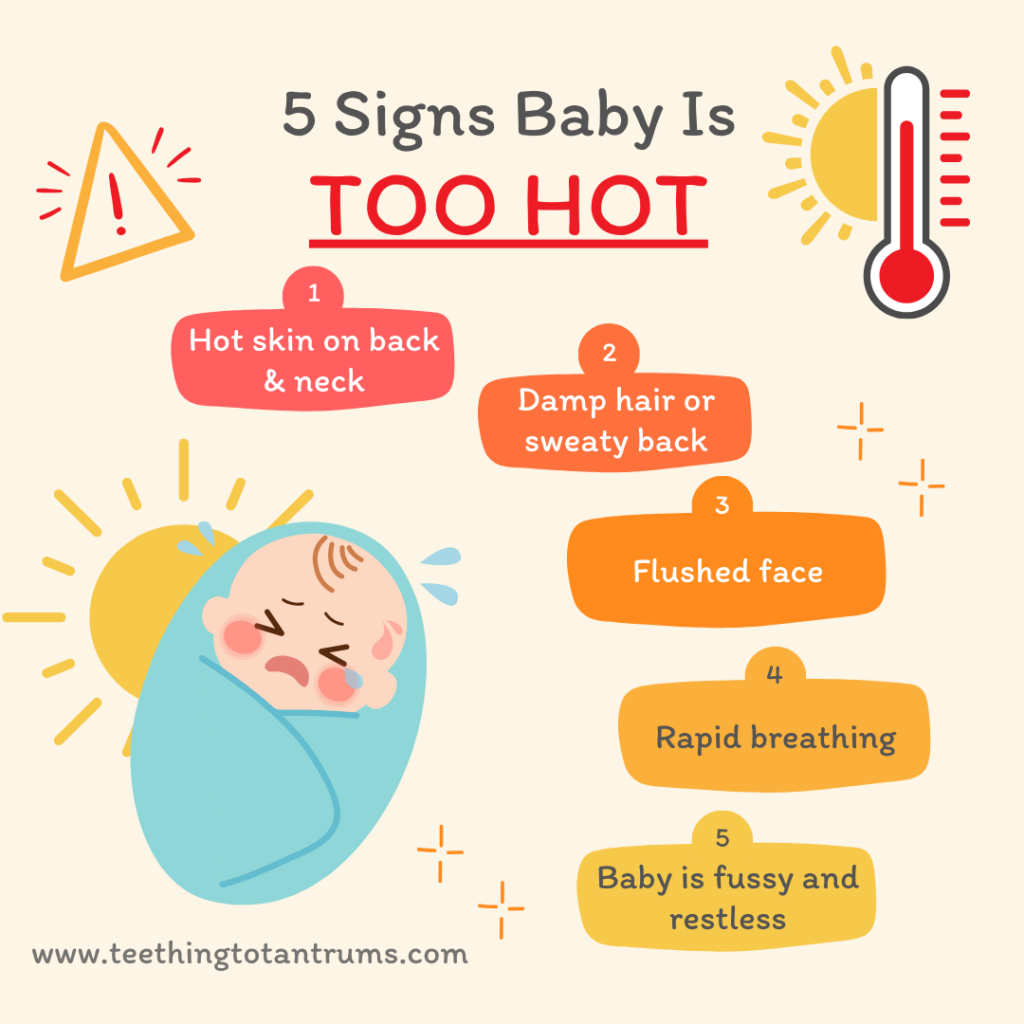
- Touch their skin: Feel your baby’s skin, especially the back of their neck or their tummy. If the skin feels hot to the touch, as opposed to just warm, your baby might be overheating. Hot skin is a direct indicator of a high body temperature. Babies are less capable of regulating their body heat, and a hot touch can signal that their body is working overtime to cool down.
- Check for sweating: Babies usually don’t sweat as much as adults do, so damp hair or a sweaty back can be a sign of excessive heat. Because their sweat glands are not fully developed, any sign of dampness on the skin or clothing suggests a higher-than-normal body temperature.
- Look for a flushed face: A red or flushed complexion might indicate your baby is too hot. When the body overheats, blood vessels near the skin surface dilate to release heat, which can cause the skin to appear red.
- Monitor for rapid breathing: Your baby’s breathing may become fast and shallow when too warm. Rapid breathing is a way for the body to increase oxygen flow and to try and release heat through the respiratory process.
- Observe behavior changes: If your baby is fussy or unusually restless, it might be because they’re uncomfortable from the heat. Discomfort from being too warm can result in a noticeable behavior change. Babies might seem less content, have trouble sleeping, or be difficult to calm down.
By recognizing these signs of overheating, you can cool down the room or remove some clothing to ensure your baby is at a comfortable temperature for sleep.
TOP TIP: If your baby is unwell and has a temperature it is important that you dress them in fewer layers than normal.
What Are The Signs Baby Is Cold At Night?
Remember that you will get to know your baby and learn when they are not comfortable.
Babies will often fuss or squirm if they are feeling too hot and will be more still than normal if they are too cold. Here are some more signs to look for that indicate your baby is cold:
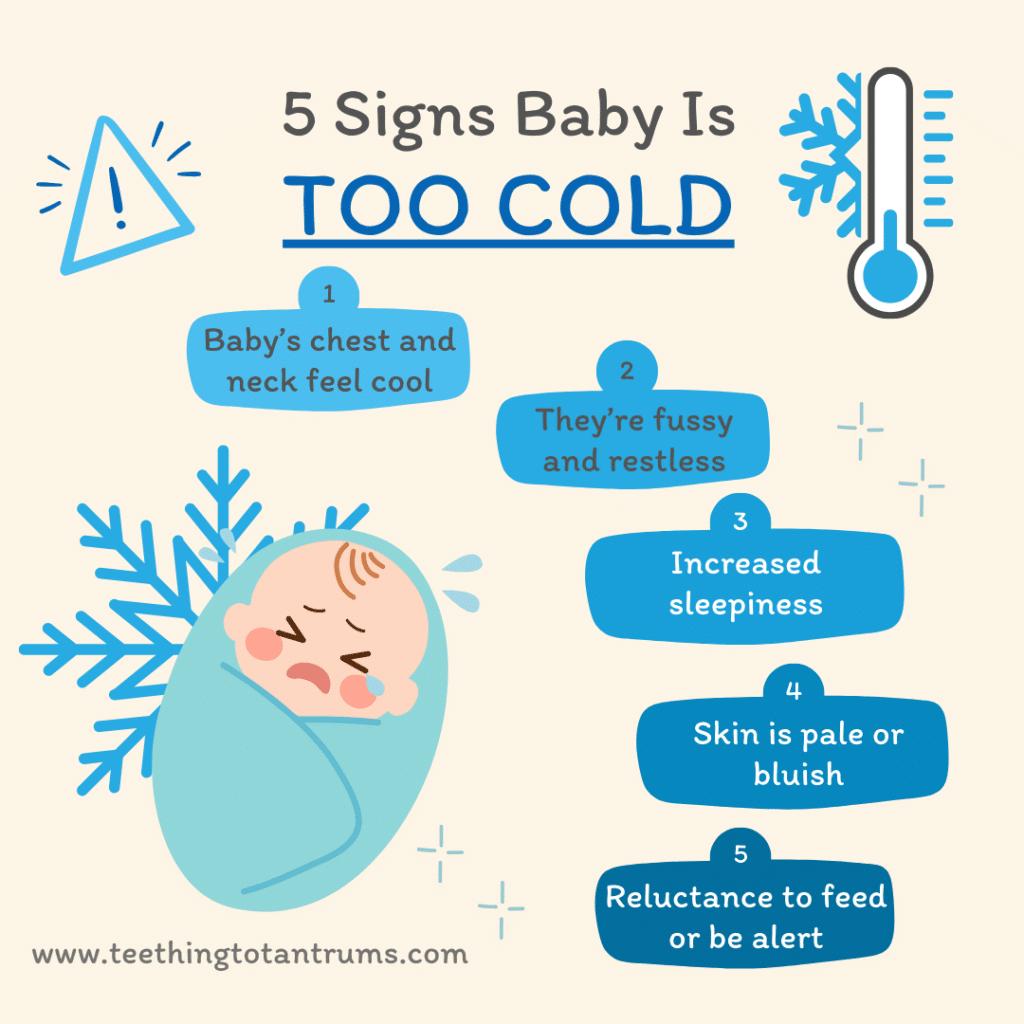
- Their Chest or Neck Feels Cool: It’s common to check a baby’s hands or feet, but these can be cool naturally. As babies can’t regulate their body temperature as well as adults, their midriff is a more reliable indicator of their overall warmth so feel their chest or the back of their neck. If these areas feel cool, your baby might need an extra layer.
- They’re Fussy or Restless: A cold baby can become fussy or have trouble settling down to sleep. Keep an eye out for fussiness accompanied by cool skin, which can be a sign of discomfort from cold. When babies are cold, they might cry more than usual or have a hard time falling asleep. This is their way of communicating that something isn’t right.
- Increased Sleepiness or Difficulty to Rouse: When babies are too cold, they might also become sleepier than usual. If you’re finding it hard to wake your baby for feedings, it could be a sign that they’re too cold. A cold environment can lead to a drop in energy levels. This can cause your baby to be less responsive and overly sleepy, indicating they need more warmth.
- Their Skin Is Pale Or Bluish: If your baby’s skin is particularly pale or has a bluish tinge to their lips it can be a sign that they are too cool.
- Reluctance To Feed: A baby that has become too cool may also be sluggish or slow to feed.
If you suspect your baby is too cool, have a cuddle to share your body heat, add another layer of clothing, or turn up the heating in the bedroom but DO NOT:
- Put your baby’s crib too close to a radiator ❌
- Use heated pads or hot water bottles ❌
- Put hats on your baby to sleep ❌
- Use extra loose blankets to warm up your baby ❌
These solutions will put your baby at risk of overheating and suffocation and it’s NEVER worth the risk.
Looking to get your little one to sleep quickly and effortlessly? Check out my Bedtime and Nap Cheat Sheet and master the art of making daytime naps and bedtimes as seamless as possible.
A bedtime & nap cheat sheet so good your little one will ask you to put them to bed...
Laura Williams "This is a life saver! I'm so glad I downloaded your bedtime & nap cheat sheet. My little one actually asked me to put him to bed last night! Unbelievable! Thank you so much!"
Click Here For The FREE Cheat Sheet
Should You Swaddle Your Baby?
Swaddling your baby can often help them sleep better. It mimics the snugness of the womb, creating a familiar environment. However, it’s important to swaddle safely to reduce the risk of Sudden Infant Death Syndrome (SIDS).
Here are some things to consider when buying a swaddle:
- Material. The material of the swaddle is important for your baby’s comfort. Look for swaddles made of breathable, soft, and stretchy fabrics such as cotton, bamboo, or muslin. Avoid synthetic materials that can cause irritation, tightness, or discomfort.
- Size. Swaddles come in different sizes, and it’s important to choose the right size for your baby. A swaddle that is too small can be uncomfortable and restrict your baby’s movement, while a swaddle that is too large can be unsafe and increase the risk of suffocation. Most baby clothing websites will have size guides for their products… Please refer to them before making a purchase.
- Ease of Use. Choose a swaddle that is easy to use and doesn’t require complicated wrapping techniques. A swaddle with Velcro or snaps can make it easier to secure your baby and adjust the tightness of the swaddle. Consider your nighttime habits too… no one wants to fiddle with complicated fastenings when a full nappy needs changing!
- Safety. Safety should always be a top priority when choosing a swaddle or swaddle alternative. Look for clothing that is designed to prevent overheating and have a snug fit to prevent your baby from slipping out of the swaddle. Consider how your baby sleeps too. Are they stretchers? Curlers? Squirmers? The best clothing option will complement your baby’s sleep habits to keep them as safe and sound.
- Reviews. Reading reviews from other parents can be incredibly helpful when choosing clothing for your baby. Look for products with positive reviews that mention comfort, ease of use, and safety.
By considering these factors, you can be assured you’re choosing sleepwear that will keep your baby comfortable and safe while they sleep.
Remember that babies vary in their need for swaddling; some might sleep soundly without it or actively dislike it.
If your baby is struggling with a swaddle, take a look at this post: What To Do When Baby Hates Swaddling.
NOTE: It’s crucial to use a swaddle that won’t come loose and ensure the baby’s hips can move freely. Using a transitional swaddle as baby grows can be a good way to wean them off the support a swaddle can give but it is important to remember that once your baby starts to roll over they should no longer be fully swaddled.
Frequently Asked Questions About Dressing A Newborn Baby For Bed
When preparing your newborn for bed, knowing the appropriate attire can be crucial. Here are some common questions answered to guide you.
Q: Can newborns wear hats to sleep?
A: No, you should not put a hat on your newborn when they sleep. Hats can pose a risk of overheating and suffocation. Your baby’s head is crucial for regulating body temperature, especially during sleep. .
Q: Is a sleep sack necessary for newborns to sleep in?
A: A sleep sack is not strictly necessary, but it can be beneficial. It provides warmth without the risks associated with loose bedding. If you choose to use a sleep sack, ensure it’s the right size and weight (TOG) for the current room temperature. This can keep your baby comfortable and safe during sleep.
Q: How many layers should a newborn wear when sleeping?
A: Generally, your newborn should wear one more layer than what you’d be comfortable in. Aim for breathable fabrics like cotton. For example, if you’re sleeping with a sheet, your baby might need a lightweight sleep sack over their attire. Always check your baby’s neck or back to make sure they are not too hot or cold.
Q: Are baby monitor temperatures accurate?
A: Baby monitor temperatures can provide a general sense of your nursery’s climate. But they should not be solely relied upon for precision. Consider using a separate room thermometer for a more accurate reading. Always use your judgment in combination with the thermometer to ensure your baby’s comfort and safety.
Offering peace of mind at a glance, the wonderful GRO-Egg changes colour with the temperature of a room. A yellow glow means a safer temperature for children to sleep in which also doubles up as a gentle nightlight for your baby!
Q: How should I dress my baby for sleep during summer nights?
A: During summer nights, opt for lightweight and breathable fabrics such as a single-layered cotton onesie low tog sleep sack: If the room is particularly warm, swaddling or a sleep sack might not be necessary. Ensure that your baby doesn’t overheat by checking their neck or back for sweat. Air circulation from a fan in the room can also help to keep your baby cool.
Further Reading
- Baby Sleep Temperature Chart: 6 Ways To Dress Baby SAFELY
- How To Dress A Baby For Sleep In Summer, Winter & When Sick
- The Perfect Baby Bedtime Routine For Peaceful Nights
- Newborn Sleep Schedule: The Complete Guide
Need More Parenting Help?
- Download our FREE Bedtime & Nap Sleep Cheat Sheet. It’s a free, easy-to-use and proven formula designed for parents of 0-5 year olds to master the art of consistently undisturbed and restful sleep without the yelling, nagging or exhausting long-winded evenings.
- Check out our Parenting Toolbox. You’ll get access to expertly-chosen products that you can guarantee are the best for your little one and your wallet.
- Are you looking for personalized guidance to navigate the challenges of parenting? I offer 1-on-1 consultations to bring you tailored strategies and actionable advice to help support your child's growth and well-being with confidence.

A bedtime & nap cheat sheet so good your little one will ask you to put them to bed...
Laura Williams "This is a life saver! I'm so glad I downloaded your bedtime & nap cheat sheet. My little one actually asked me to put him to bed last night! Unbelievable! Thank you so much!"
Click Here For The FREE Cheat Sheet


